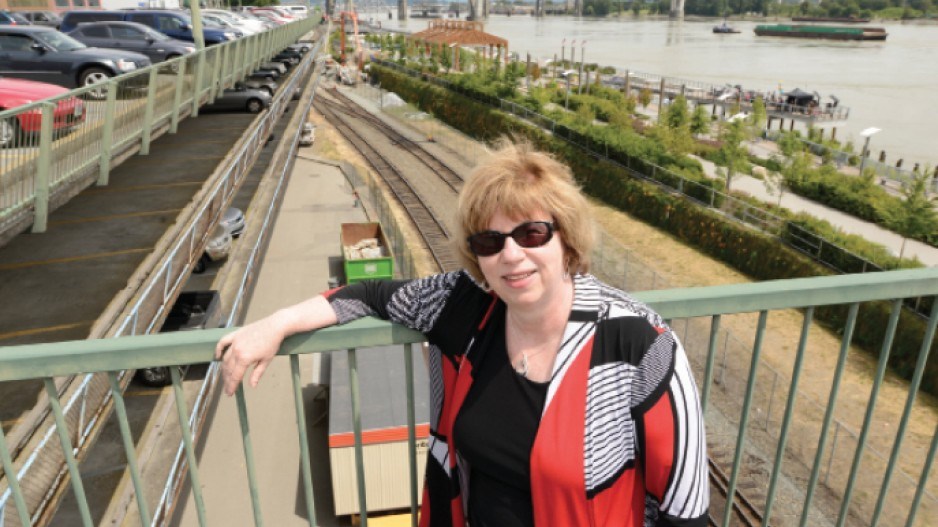“Shall we gather at the river?” The old question increasingly has Metro Vancouver municipalities and developers shouting, “Amen!”
“[The city] turned its back on the river previously, and now the river's become the front yard. It's a place people want to go and play,” said Bev Grieve, director of development services for New Westminster, which is entertaining proposals from Bosa Properties Ltd. and Larco Investments Ltd. for sites on its working waterfront for upwards of 1,350 residential units, a hotel and commercial space.
Spurred by renewal of its business core and Mark Shieh's makeover of New Westminster Quay as the River Market, New Westminster is taking its lead from the success of Vancouver's Coal Harbour and False Creek neighbourhoods with a plan that reorients the city towards the Fraser River.
“[The] river is really the amenity that's needed to advance the success of the downtown,” Grieve said.
It's not just waterfront sites that are in demand but those with views of the river from downtown, such as the Trapp block, where Robert Fung's Salient Group has developed 196 homes.
“They're taking advantage of that river view,” she said. “It's really entertaining to watch what happens on the river on a daily basis. This idea that it's a pristine environment is not part of the picture, and probably ought not to be – it's a very, very interesting place to be.”
The activity is even greater farther downriver where Beau Jarvis, vice-president, development, for Wesgroup Properties Ltd., is overseeing development of River District on the former East Fraser lands in South Vancouver.
“People have a connection to the water – whether it's the visual, whether it's the smell, [the] sound,” he said.
Jarvis previously worked with Onni, which developed Imperial Landing at the mouth of the Fraser in Steveston and is also building adjacent to the Richmond speed-skating oval.
Wesgroup previously developed Bedford Landing in Langley, which won awards for its integration with the Fraser riverfront. River District brings that kind of project to Vancouver, which has little waterfront land left to develop.
“If I was to put a dollar value on oceanfront versus riverfront, there's probably more of a dollar value on oceanfront. But there isn't really any of that left, so the next waterfront is river,” Jarvis said.
The best locations attract upper-end developments because they're not making any more riverfront – unlike transit-oriented projects, also in favour among developers, explained John Ryan, vice-president, development, with Aspac Developments Ltd.
“It's a different type of thinking than transit-oriented [development], where you're in and you're out, and you're producing a less expensive product, usually smaller units,” Ryan said.
Seven years ago, Aspac paid a stunning $141 million for 18.6 acres adjacent to the Richmond Oval. River Green, the resulting development, has seen sale prices average $700 a square foot – a new benchmark for Richmond.
A lack of new waterfront development sites promises to make existing units more valuable – Ryan points to the city works yard on False Creek as one of the few large-scale opportunities to come – but it's also giving developers a fresh regard for waterfront as an amenity.
Being steps from the Fraser enhances the appeal of a site Cressey Development Corp. is tackling just east of the oval, executive vice-president Hani Lammam said. The site is just minutes from Lansdowne Centre transit station and downtown, but is also a gateway to the riverfront.
“When a project has water exposure, that's a further enhancement to that project,” he said. “So long as you can get those water views, it adds such a premium to a unit's value and the demand for it.”




